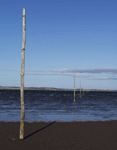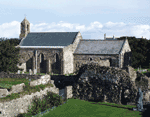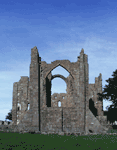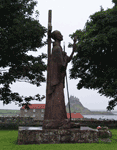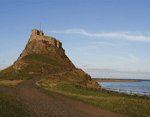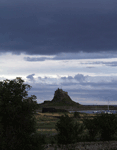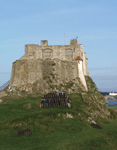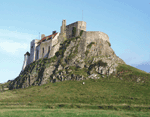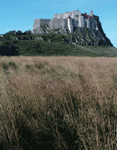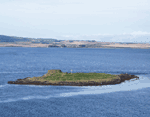|
Lindisfarne or Holy Island, was with Canterbury the Cradle of Christianity in England. Aidan, the missionary from Iona arrived here at the invitation of Oswald King of Northumbria in 635 AD. The island is only about three and a half miles long and one mile broad at its widest point. Only accessable by using a causeway at low tide, the incoming tide is very swift and can catch the unwary. Wooden poles mark the route taken by pilgrims at low tide from the mainland to Lindisfarne and on to the ruins of the Priory where there is a statue of St. Aidan and the beautiful church of St. Mary the Virgin. Once there were four churches on the island - the Parish Church, the Priory Church, St. Cuthbert's by the Sea on St. Cuthbert's Island and also a church out at St. Coombs farm dedicated to St. Columba. Beyond the Priory perched on a rocky crag stands Lindisfarne Castle, originally a Tudor fort it was converted into a private house in 1903 by Edwin Lutyens. A short walk from the castle there is a walled garden which was planned by Gertrude Jekyll. All around the island large colonies of seals can be seen at low tide basking on the rocks or the sand bars. A wide variety of birdlife can be seen feeding on the mudflats between the tides.
The Lindisfarne Gospels Exhibition has an interactive touchscreen version of the book called 'Turning the Pages' and is on permanent display at the Lindisfarne Heritage Centre on Holy Island.
|

